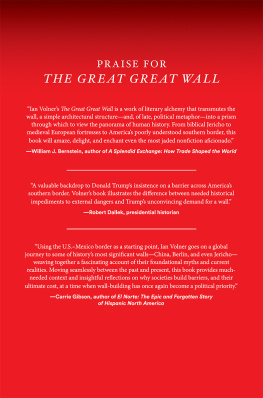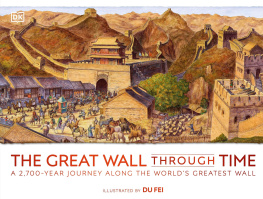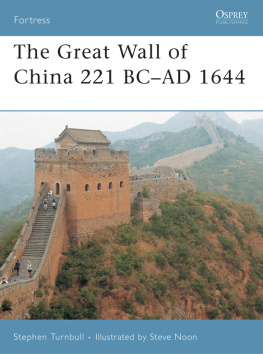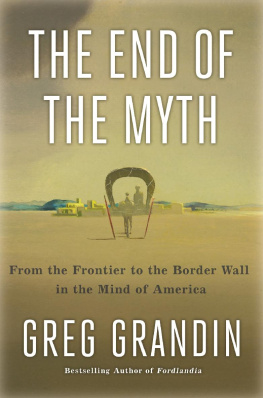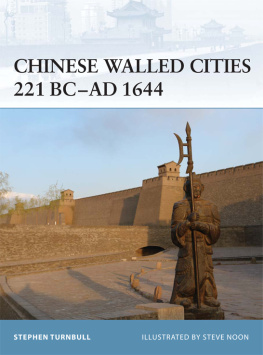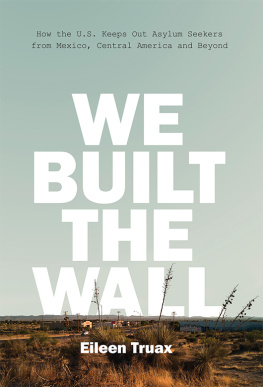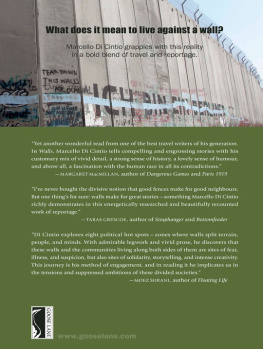ALSO BY THE AUTHOR
This Is Frank Lloyd Wright
Michael Graves: Design for Life

Copyright 2019 Ian Volner
Cover 2019 Abrams
Published in 2019 by Abrams Press, an imprint of ABRAMS. All rights reserved. No portion of this book may be reproduced, stored in a retrieval system, or transmitted in any form or by any means, mechanical, electronic, photocopying, recording, or otherwise, without written permission from the publisher.
Library of Congress Control Number: 2018936293
ISBN: 978-1-4197-3282-9
eISBN: 978-1-68335-530-4
Abrams books are available at special discounts when purchased in quantity for premiums and promotions as well as fundraising or educational use. Special editions can also be created to specification. For details, contact specialsales@abramsbooks.com or the address below.
Abrams Press is a registered trademark of Harry N. Abrams, Inc.

ABRAMS The Art of Books
195 Broadway, New York, NY 10007
abramsbooks.com
For Mildred
Life has to do with walls; were continuously going in and out, back and forth, and through them. A wall is the quickest, the thinnest, the element were always transgressing...
John Hejduk, architect
CONTENTS
INTRODUCTION

Monument 252, Tijuana
The president of the United States knew little of the border, and less of anything beyond it. A northerner, he was hardly known (to the degree that he let anything of the sort be known) as an admirer of anyones culture save his own; but for the course of political events, it is unlikely there would have been anything to connect him to Mexico or its frontier. In truth, the whole business never much interested him.
The subject had first crossed his desk in the form of a bulky portfolio, padded thick with maps and tables and photographic plates, arriving in the Oval Office less than two months after the incumbent had set up shop there. This was the Report of the Boundary Commission, the product of five years arduous research on and around the southern border, conducted by a banner intergovernmental group of surveyors, engineers, and scientists. Politically, the project was an orphan: The document had been left to languish for months after being submitted under the previous administration. That administration hadnt commissioned it either, the diplomatic wheels having been set in motion by its predecessor. The report was long, and complicated, and the newly installed secretary of state, with whose perfunctory commendation it was transmitted to the president, was known to be hopelessly senile. It is doubtful that the president even so much as glanced at it.
As a consequence, the president did not read about the life-threatening border climate that, as the group discovered, could cause perspiration at a rate of 7 quarts per day for the men and 20 gallons for the animals. He did not read about the recurrent and chillingly realistic mirages, one of them resembling a city with all its buildings, another a palisade a hundred feet high, following the men for miles through a narrow valley; when at last it shimmered and vanished, the men discovered they had been traveling through a barren plain. The president did not read about the difficulties of getting and keeping the pack mules, the equipment, or the hired laborers who frequently quit once theyd had enough of the desert and its tricks. What the haze did not do (the commissioners reported) the human mind did, conspiring with the oppressive heat and the featureless expanses to produce fantastic distortions. At times a jack rabbit would loom up on the desert with the apparent size of a cow, wrote the commissioners. Occasionally the legs of animals would be so comically lengthened as to give them the appearance of being mounted on stilts.
The report recounted all this alongside an itinerary of injuries and accidents and endless searches for water in country that, even on the threshold of the twentieth century, was still more or less terra incognita. There were confounding encounters with desperately poor residents of a smattering of small towns, outside of which their year-round numbers amounted to no more than a hundred individuals in a region spanning some 24,000 square miles. There was ample evidence of the dead, small crops of gravestones clustered together in the desert, sometimes belonging to whole families who had perished of thirst and whose sun-blasted remains had not been found until the following rainy season. The commissioners did not see much evidence of the rainy season, since for the first two years of their sojourn the Southwest was struck by a severe drought. They passed scores of dead cattle and forsaken ranches. They spotted evidence of disused dams, constructed (they speculated) by long-dead civilizations. The desert flowers, they noted, had no fragrance.
For all its privations, however, the work genuinely seemed enjoyable to those carrying it out, and the commissioners chronicle is one of high adventure. What they were looking for was itself a variety of a hallucination. Although the borders cartographic location had been settled by a treaty following the Mexican-American War, no truly modern effort had yet been mounted to explore, and to permanently define, the whole border that divided the United States and Mexico between the Rio Grande and the Pacific. No one could even be quite sure where it was.
The border, with apologies to Robert Frost, was ours before we were the borders, and laying permanent claim to it was what the Boundary Commission was tasked with doing. They were not the first to try: An original attempt, the so-called Emory-Salazar survey, was completed in 1855 and had been if anything even more intrepid, but the crude markers it left behind had been undone by time, putting the boundarys precise location once again in doubt. Using the most sophisticated metrical techniques then available, the new expedition that set out in 1892 was to follow and document the frontier, demarcating it as precisely as possible using a series of small but sturdy monuments, purpose-built and distributed at intervals of no more than five miles beginning in El Paso, Texas. The monuments, fat obelisks of stone with placards bearing sequential numbers, stood about ten feet high, and the commission had immense difficulty (especially when the rain, at last, arrived) carting them into place and then rooting them in the shifting, sandy soil.
In all of these endeavors the group was aided by their opposite numbers on the Mexican side. The commission was a binational effort, and over and over the American group relied on the expertise of their Spanish-speaking counterpartsthe region being, in the main, Hispanophoneto communicate with the locals and help guide them to wells and natural springs. In what seems now a grand geopolitical farce, this unlikely band of Mexicans and Americans spent five years wandering in the desert, trying to avoid dehydration, frequently crisscrossing the very border they were charged with delineating, exactly as though there were no border at all.
At times, it appeared that no one really cared. It was not a subject of pressing concern to anyone, least of all to President William McKinley, during whose term it just so happened that the US-Mexico borders real-world location was definitively established, and on whose desk the report landed. Except as an occasional cautionary tale about the dangers of silver coinage, Mexico was a nonissue in McKinleys rise to the presidency. The newly elected leader did not care about the commissioners long hikes along parlous ridges, or their trudges into dark arroyos, or the final lines in their cover letter, extolling our associates of the Mexican commission [who] have invariably shown a spirit of fairness and courtesy. The fleeting matter of the Boundary Commission was as much involvement as McKinley had with the border, until four years later, when his political manager made him go there.
Next page
